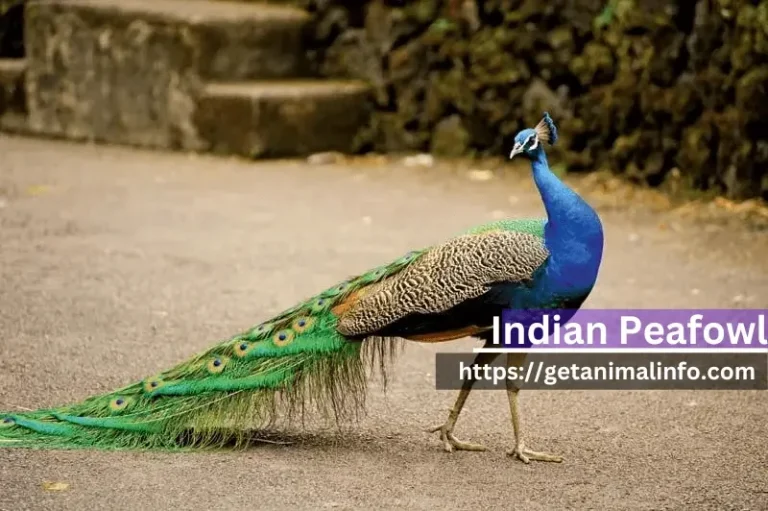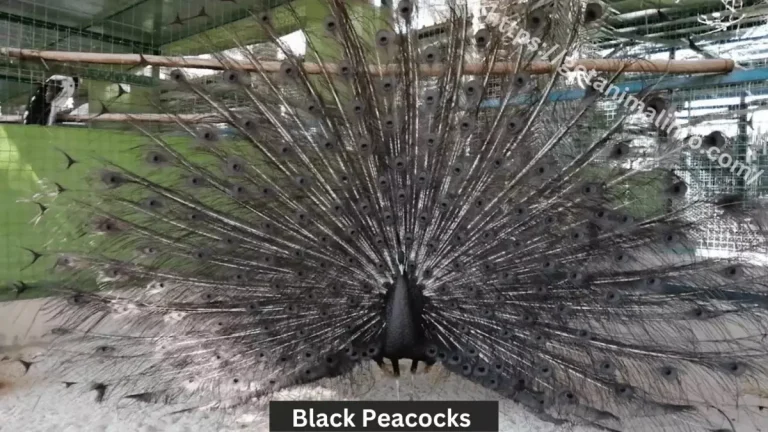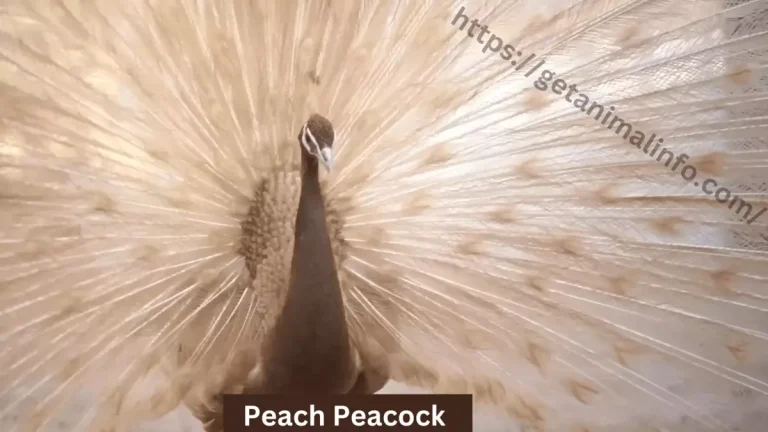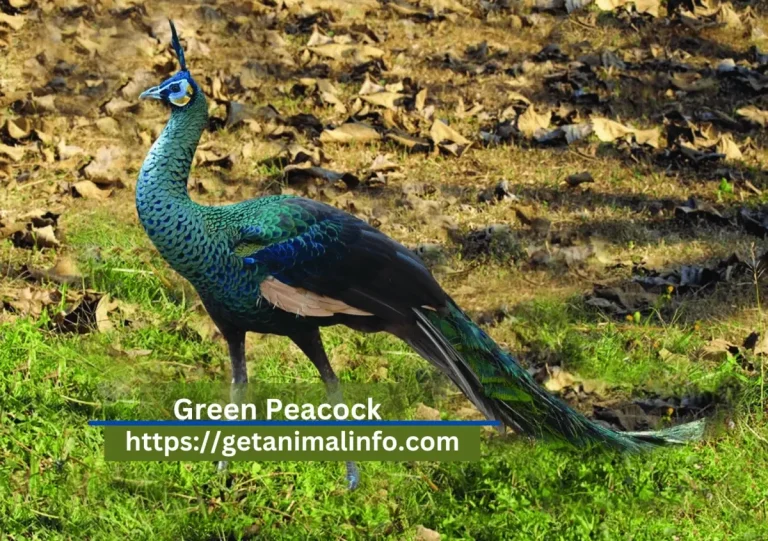White Peafowls-Origin, Taxonomy, Habitat & Diet
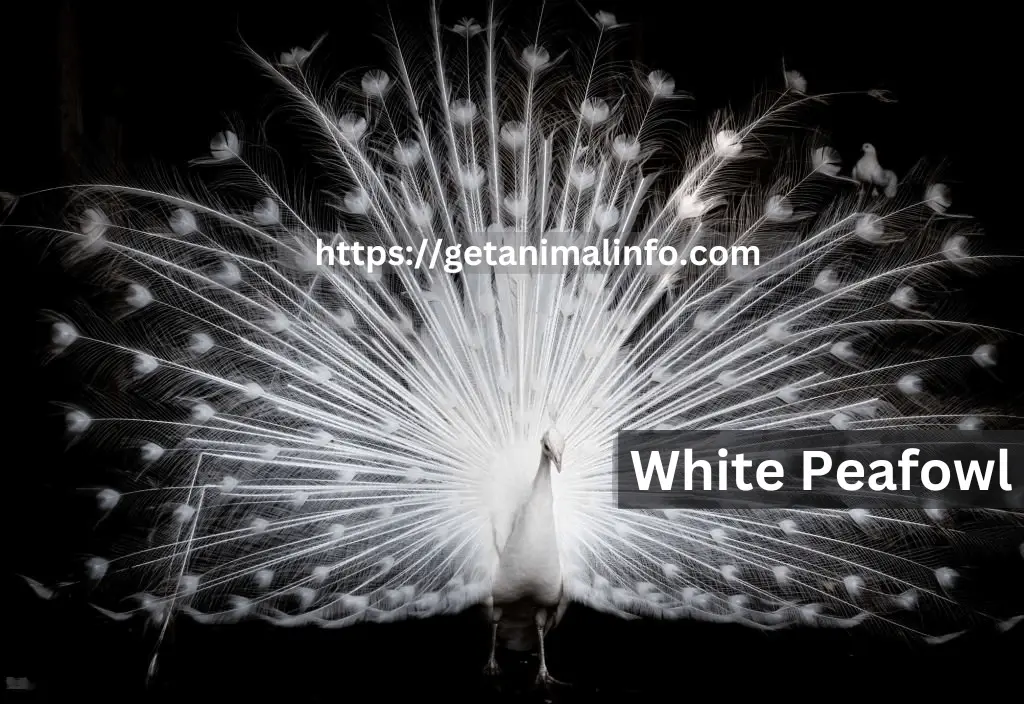
Peafowls are imagined as the most colorful birds carrying magnificent beauty in their wide feathers. They are blessed with a mix of vibrant colors and hues. The scene is like a kaleidoscope of colors when they spread their feathers. Peacocks are always imagined as colorful creatures of nature. But what if they lost their color? Yes, a rare breed of peacocks is available that has no vibrant hues, that breed is in white. Peacocks in white color appeared when they lost their plumage.
White peacocks are native to Indian peafowls. Normally, it’s out of the way to imagine peacocks with colors or in white. But they are a special species of peacocks bred in captivity. The white color is a result of leucism. The pigment of feathers becomes unable to appear which results in white colored feathers.
You can also read:
Genetic Basis Of White Peafowls
Most of the time white peafowls are misunderstood as Albinos. Albinism is a genetic condition characterized by a lack of melanin. In this condition, the pigment is responsible for the color of skin, feathers, and eyes. In the case of albino peacocks, they have a genetic mutation that results in the absence of melanin in their plumage, skin, and eyes. Albinos have white feathers due to the absence of melanin but they have pink or red eyes and pale skin. While white peacocks are of normal eye and skin color.
White peafowls are typically not considered true albino individuals. Instead, they are more accurately described as leucistic. Leucism is a condition in which there is a partial loss of pigmentation in the feathers, skin, and eyes but it is not a complete absence of melanin as is the case with albinism.
In the case of white peafowls, their distinctive white plumage is a result of leucism rather than albinism. Leucistic peafowls may still have some pigmentation in their eyes, while albino individuals typically have pink or red eyes due to a complete lack of melanin in the iris. So, to clarify, white peafowls are considered leucistic rather than true albino. This leucistic trait is a genetic variation that leads to their striking and purely white appearance.
Taxonomy of white peafowls
The taxonomy or classification of white peafowls follows the same system as that of the blue peafowls (Pavo cristatus). The reason for the similarity between white and blue peacocks is that they both are native to the Indian Subcontinent. Here is a breakdown of the taxonomy for white peafowls,
So, the white peafowl belongs to the genus Pavo and is classified under the species Pavo cristatus, which is the same species as the blue peafowl. The color variation in peacocks is due to a genetic mutation that affects pigmentation. While the white peafowl is visually different from its blue native bird they share the same taxonomic classification.
Origin and transportation
Peafowls belong to the Indian Subcontinent and Southeast Asia. You can easily find them in the wild areas and forests of these regions. But white peacocks are not naturally born birds, they are born under the process of genetic color mutation called leucism. They are rare and unique, and because of their genetic coloration, it is difficult to find in the wild.
White peafowls are kept and bred in captivity due to their rarity. Their population is also less, only a few hundred of them exist on this planet.It is said that in the 18th century when the British conquered India, they were very fascinated by these beautiful and colorful birds. So they exported some of the beautiful colored peacocks to the UK. They kept them in habitats with care and tried to create different coloration in their plumage through the genetic mutation process. In 1830, the first peacock in white color appeared. The breeders are now working to enhance their population by leucism and by mating white pairs of them. You can now find these beautiful peacocks in different parts of the world, especially in the UK and America. They have been kept in zoos, parks, gardens, and wildlife sanctuaries to showcase their rare beauty to people.
Habitat and Living Areas
White peafowls live in many different places just like their blue counterparts. They like places that are green and have certain features like greenery and waterfalls that make them happy to live in. These beautiful birds are usually seen in areas with lots of trees, grassy fields, and places with water like rivers and lakes. There is a chance to find them in their home countries like India. But because of their rarity, they have been mostly found in captivity. This captivity includes habitats, zoos, parks, and farmhouses built according to the environment they like.
These birds like a place that has a bit of everything like open spaces where they can find food, trees where they can rest, and water for drinking. Whether they are walking around in grassy fields or sitting on a branch, white peafowls are happy in places that give them a mix of shelter and open spaces. This makes a lovely picture with their white feathers and the green surroundings.
Dietary Habits of White Peafowls
White peafowls are omniverse like other colored peafows which means they eat both plants and animals. In the wild, they eat things like seeds, fruits, insects, small reptiles, and even small mammals. This is a type of diet called balanced and is ecologically friendly. They are naturally capable of finding their required food from their natural green habitat. They have sharp claws and foreseeing eyesight to find the insects and seeds in the soil.
When they are kept in captivity or as a pet people are responsible for providing them their required food. The people taking care of them make sure they eat a balanced diet when they live in places like zoos, farms houses, or wildlife sanctuaries. This includes special peafowl pellets, grains, fruits, and vegetables. They also need fresh water every day to stay hydrated in their green homes. Their diet helps them stay healthy and also plays a part in the lively environment where they live. Whether they’re in the wild or taken care of by humans, white peafowl’s dietary habits show their diversity and how peaceful their homes are.
Breeding of White Peafowls
In breeding season white peafowls perform courtship rituals and attract their female partners to attract them for mating. They cannot perform courtship before reaching the age of one year. When they grow up to one year they develop a long feathery tail that helps them in matting. To create a white peafowl, a white pair of peacock and peahen is needed to mate. If white peacocks mate to Indian blue or black shouldered peahen then the peachick would have white latches.
The number of eggs of peahen can range from 4 to 6. Peahen incubates these eggs for about a month. Beautiful peachicks are hatched from eggs with yellow skin and blue eyes. White feathers start growing on their body within a week of their hatching. They can fly a short distance after the third day of their birth. In captivity, a comfortable and warm environment is provided to them for their healthy growth. The safety of peachicks is also ensured to save them from outside threats.
Physical Appearance
The appearance of white peafowls is no less than a fantasy. They look really beautiful and graceful. They capture people’s attention with their timeless beauty. When the white peachicks are born they have yellow skin and blue eyes. Their skin gets covered with white plumage as they grow. Peacocks have longer tails than peahens which helps them for matting. These tails took 12 to 14 months to get long.
White peafowls are covered in pure white feathers that give them a majestic and royal appearance. Their long tail feathers with eye-like patterns flow behind them like a delicate snowfall. When they fan out their wings in the air they give a glimpse of snowy clouds. Their slender necks have crested heads with intricate details that make them look even more sophisticated. These birds stand tall and calm and show a sense of peace. They blend perfectly with their surroundings and give a natural and pure vibe. Every feather and shape of white peafowls highlights how amazing nature’s artwork can be.
Population and Conversation
White peafowls are a very rare breed. The exact number of their population cannot be said with confirmation but it is said that they are about 100,000 in numbers in the whole world. According to the report of ICUN they are listed as the least concern species. The reason for their rarity is their birth through genetic mutation or leucism. There is an estimate that the possibility of white peafowl appearance is one out of 30,000.
Wildlife researchers have reported that white peafowl species have a threat of extinction from this earth because of their low population growth. They also have an outside threat from people who theft them from their natural habitats in enthusiasm to keep them but they do not pay attention to their diet and security. Some breeders also use them to color in different rare shades like red or pink to make them more magical but it affects their health. White peafowls need serious conservation efforts to conserve them for the longer run on this planet. Breeders also are working to increase their population through breeding or genetic mutation. They are also developing awareness programs for the general public to become aware of this rare and graceful beauty.
Cultural Significance and Symbolisation
Peafowls have a significant impact on different cultures. They are not just beautiful but they also have special meaning in different cultures. In many places, these majestic birds are seen as symbols of purity, nobility, and being immortal. In India, they are even considered divine companions to certain gods in Hindu mythology which shows how sacred they are.
In Western cultures, the bright feathers of white peafowls represent things like starting anew, coming back to life, and having a spiritual awakening. Artists, writers, and storytellers use these birds as a way to talk about going beyond everyday life and reaching something extraordinary.
White peafowls were also present in royal courts throughout history, and because of that they became linked to ideas of wealth and luxury. Their beautiful appearance made them important symbols in things like coats of arms and royal symbols, showing off richness and grandness. As symbols of beauty and grace, white peafowls are not just pretty to look at but they also tell stories in cultures around the world. Their meaning goes beyond just looking good, connecting to ideas of spirituality, being royal, and the timeless beauty of the natural world.
White Peafowl in Fairytales
White peafowls are also part of magical stories like fairytales and folklore from ancient times. They have special and mythical meanings in those stories. In these magical tales, white peafowls often represent things like purity, grace, and beauty from another world. Their white shining feathers become a precious treasure that brave heroes go on adventures to find, showing the quest for something rare and magical.
In some stories, white peafowls are magical creatures themselves with the power to make changes or give blessings. Because of their lightning presence, they are represented as angels by storytellers. They make good companions for fairy princesses or wise enchantresses because they look so royal and act gracefully. In the world of fairytales, white peafowls bring a sense of mystery and elegance. They go beyond normal things and bring readers and listeners into a world where magical and beautiful things exist together perfectly.
Facts
White peafowls Pros and Cons
Pros
Cons
Frequently asked questions
Conclusion
White peafowls are known for their unique but elegant appearance. The white color in their plumage is because of a genetic color mutation called leucism. The world of white peafowls is like a fascinating story of beauty and cultural importance. These beautiful birds make different places look more magical with their shiny feathers, like the wild, royal courts, or wildlife sanctuaries. But, it’s important to remember that they also face challenges like being easy targets for predators. Some people misuse them by coloring them artificially in other bright colors to give them a magical look but it costs their health and safety. We also need to be careful when breeding them and take care of their healthy environment. They represent purity and nobility in different traditions and make our cultural story richer. They remind us to see and admire the wonders of the natural world.


